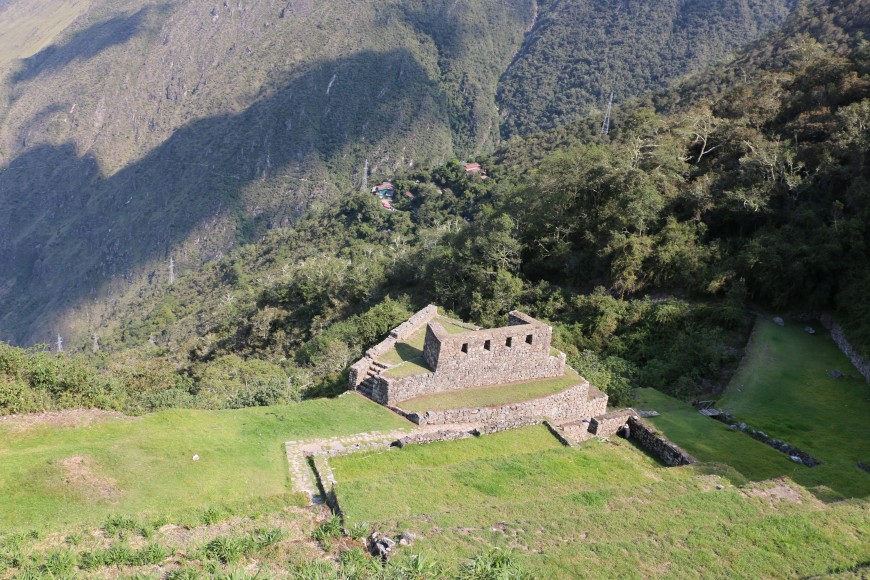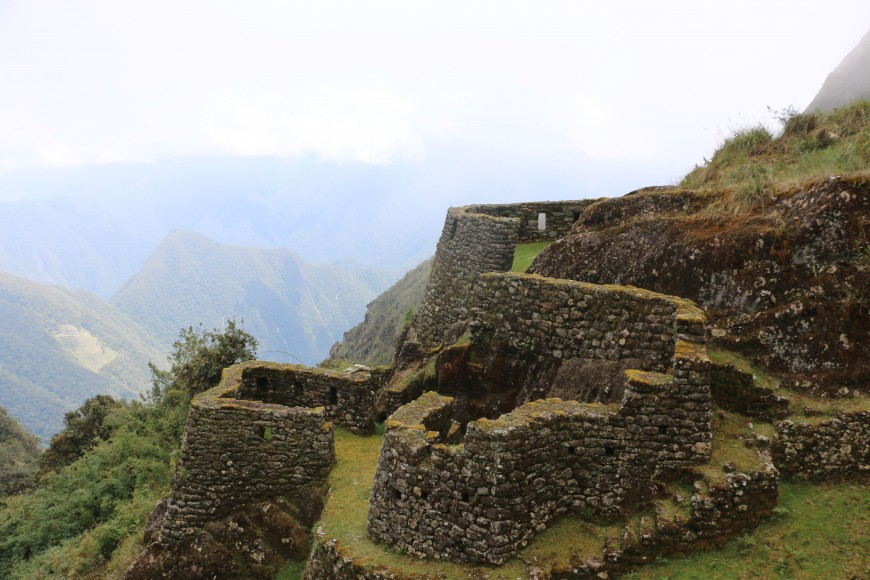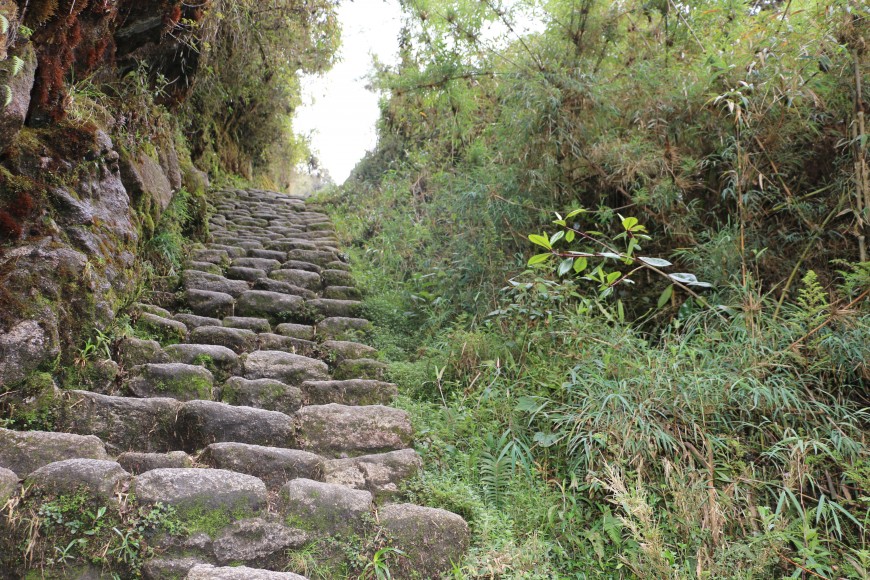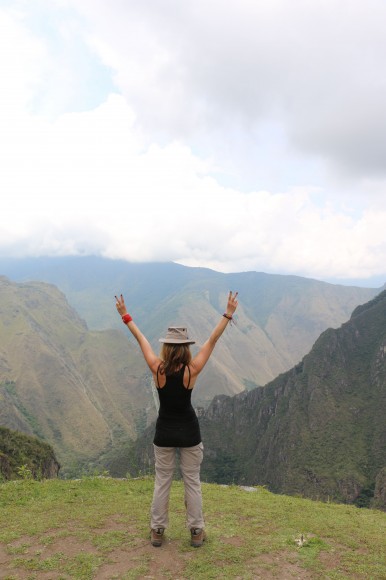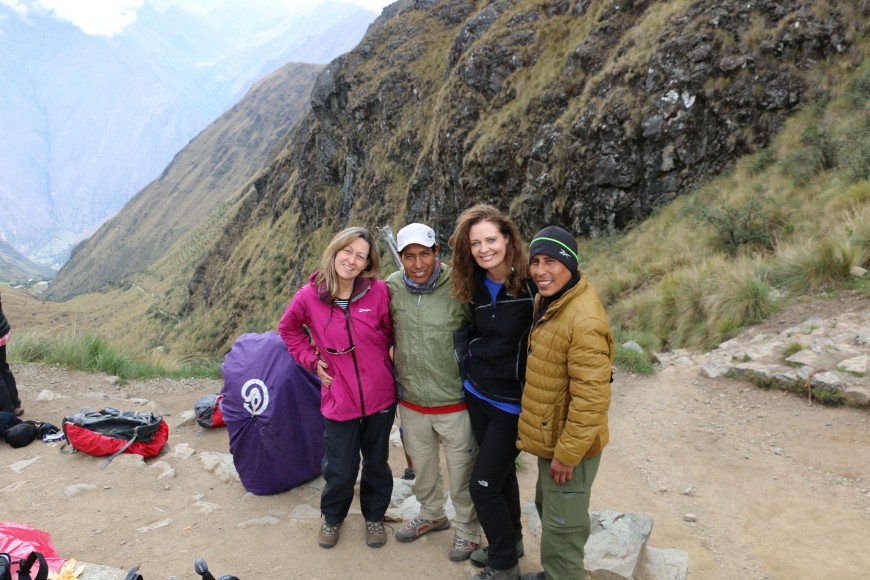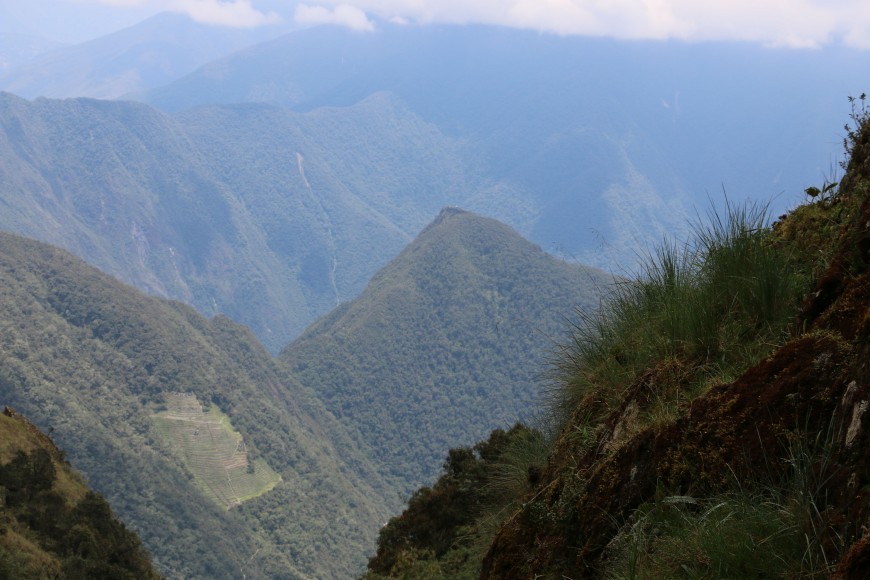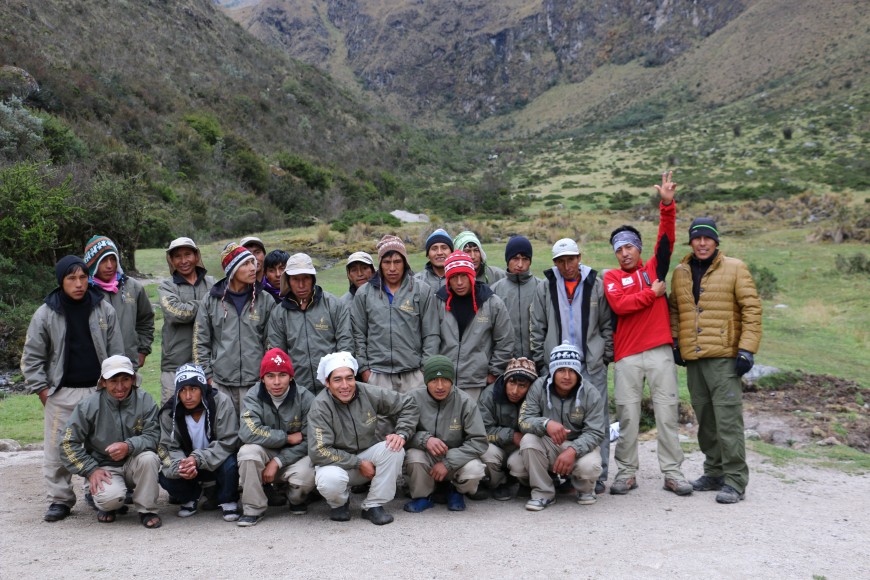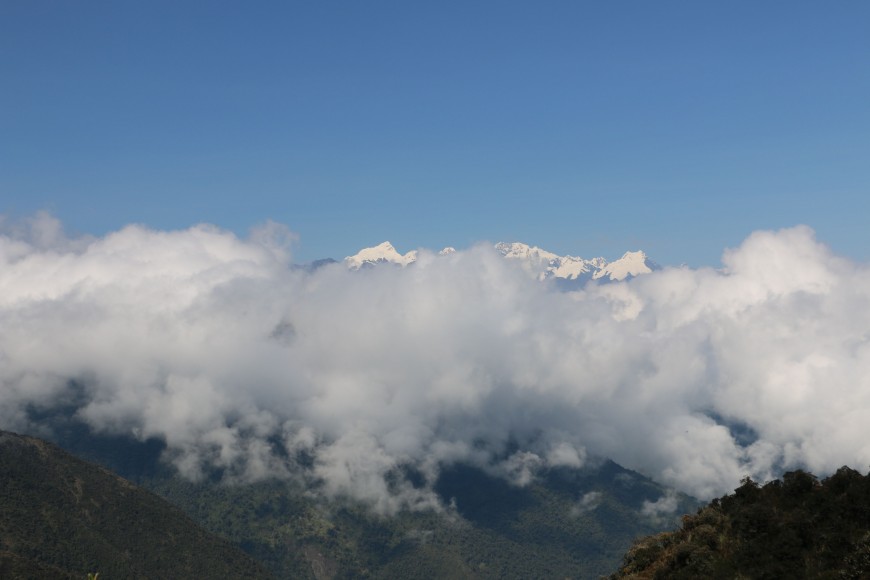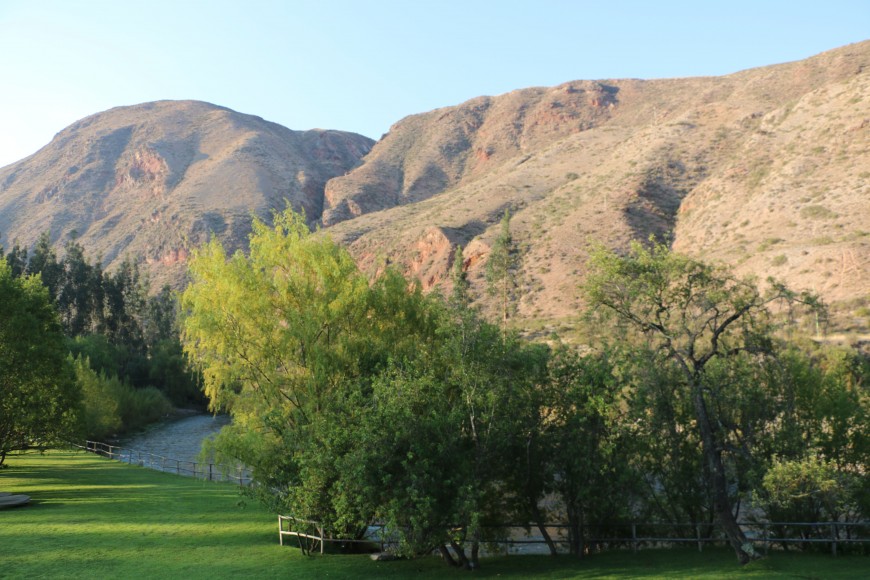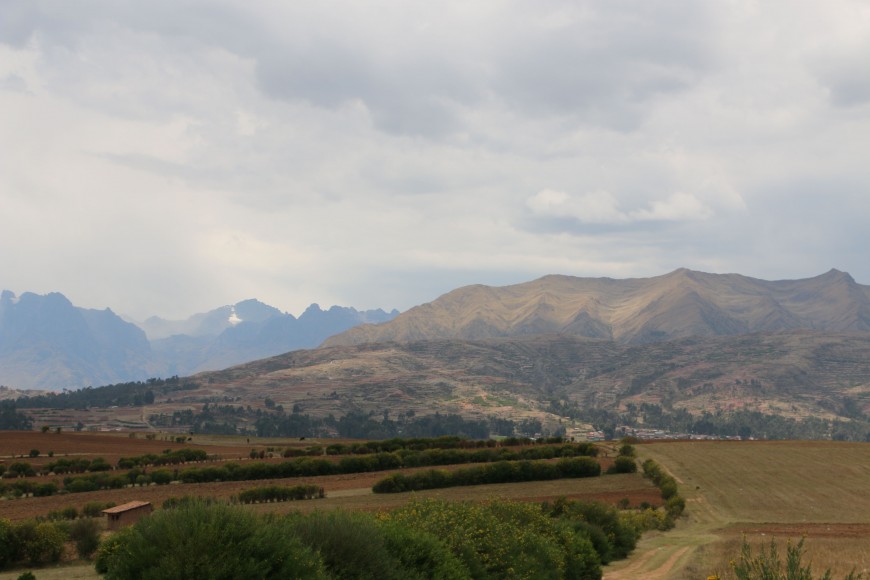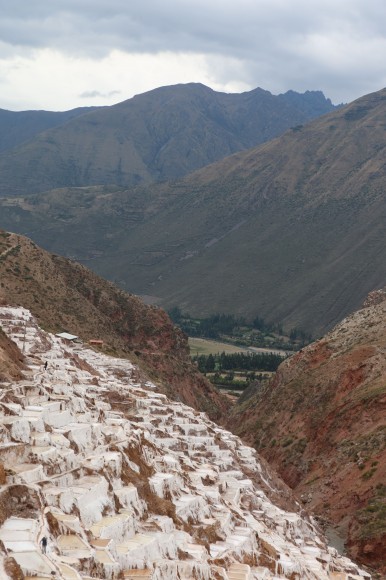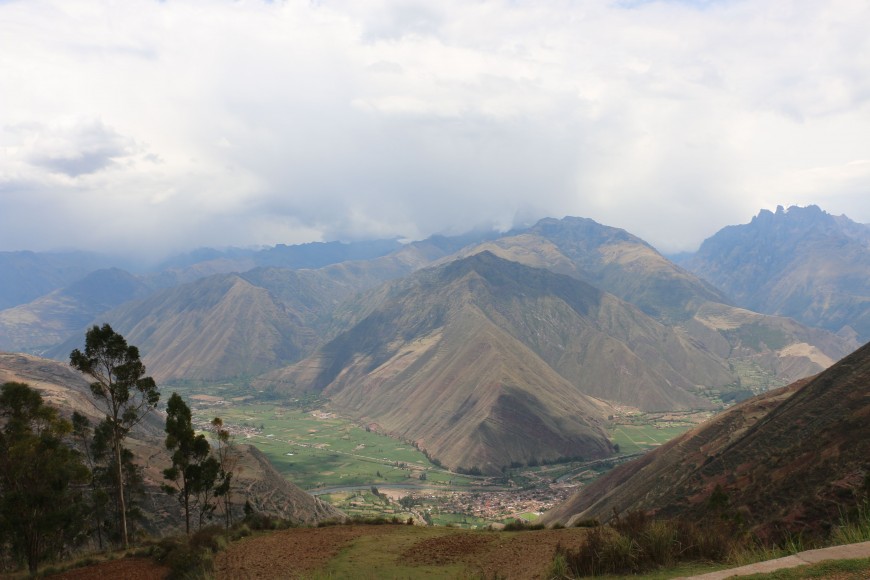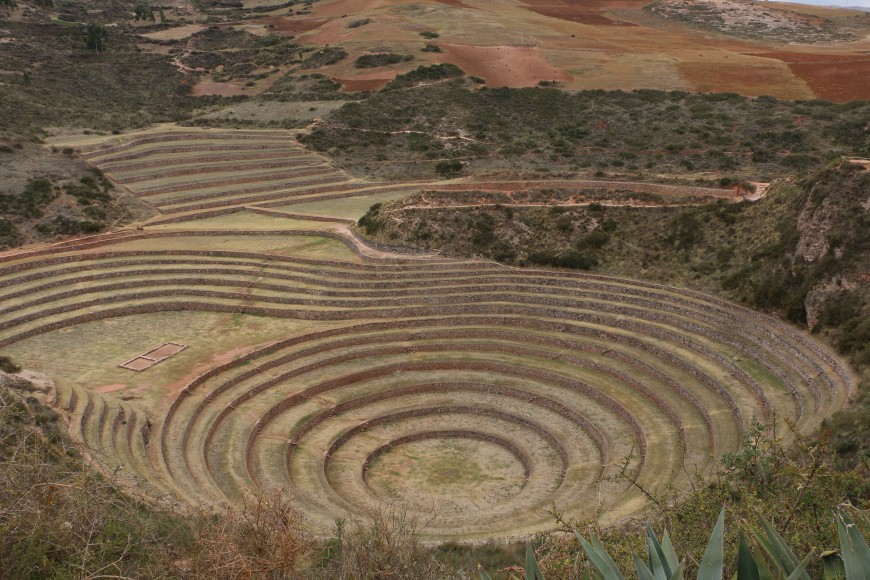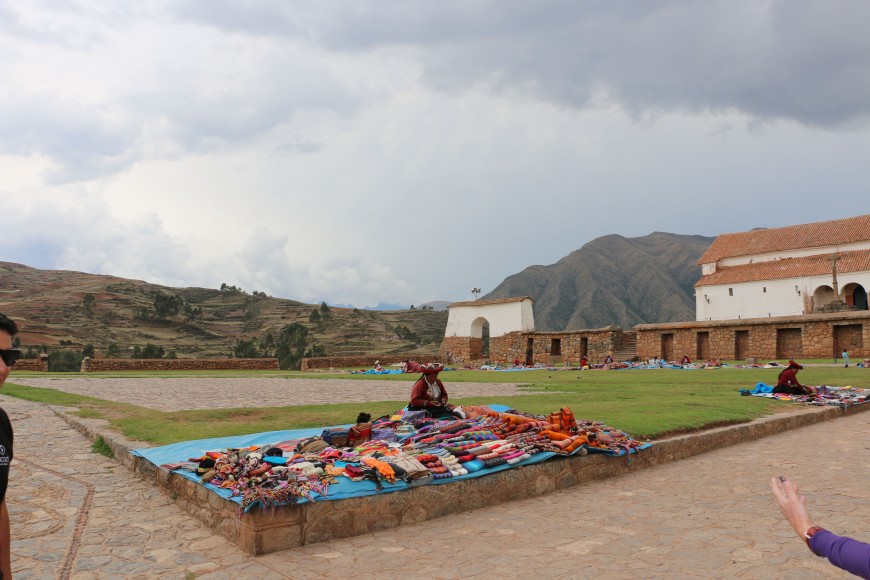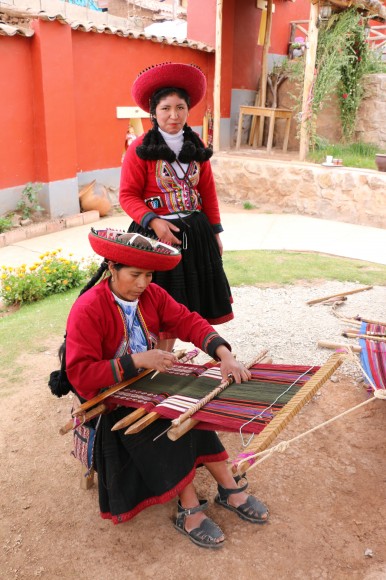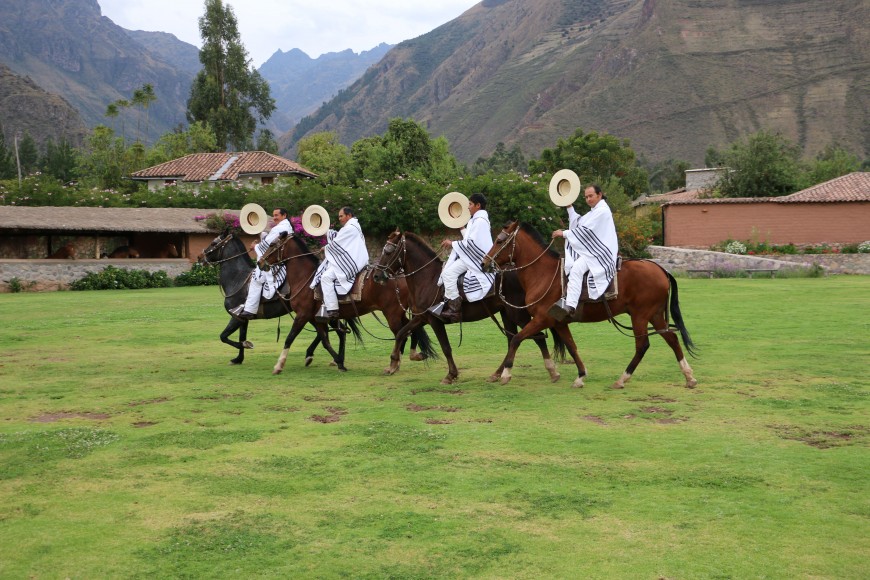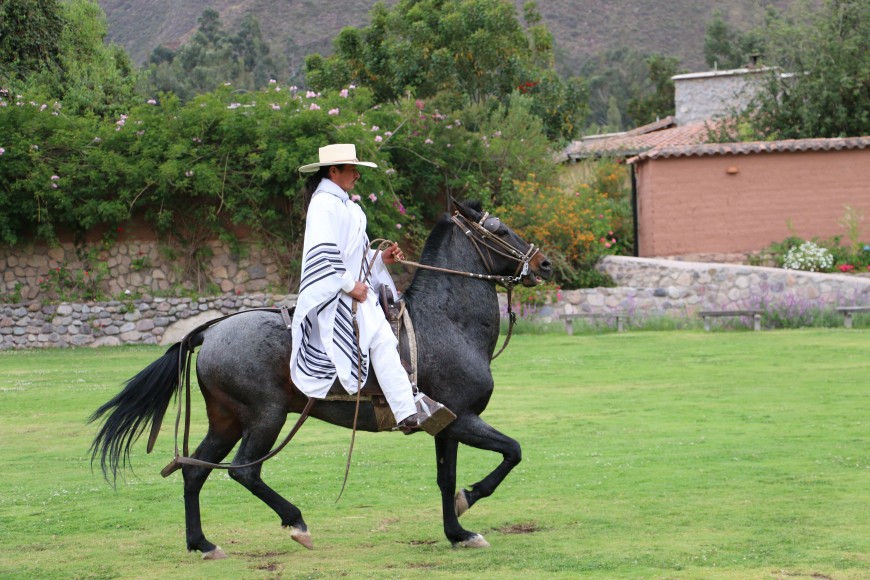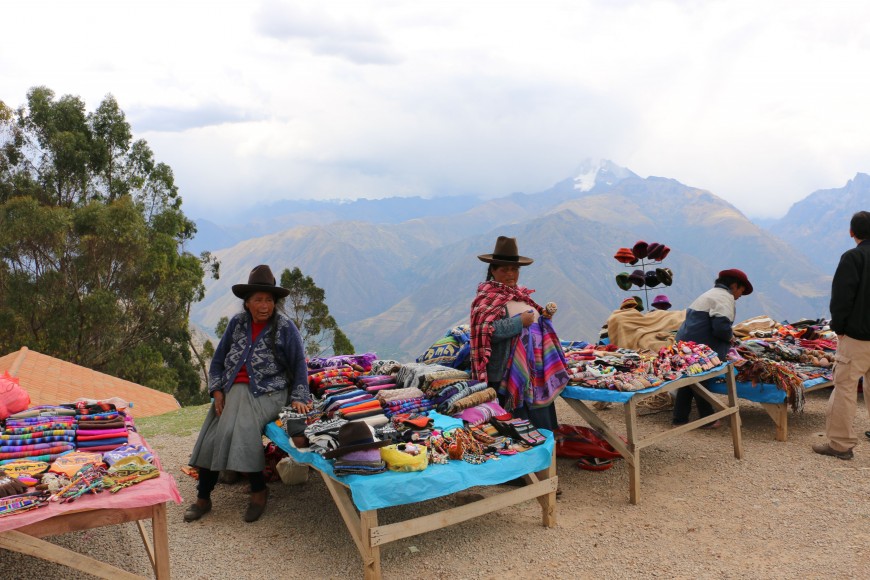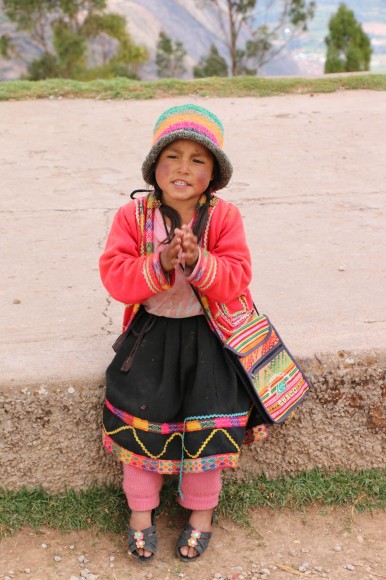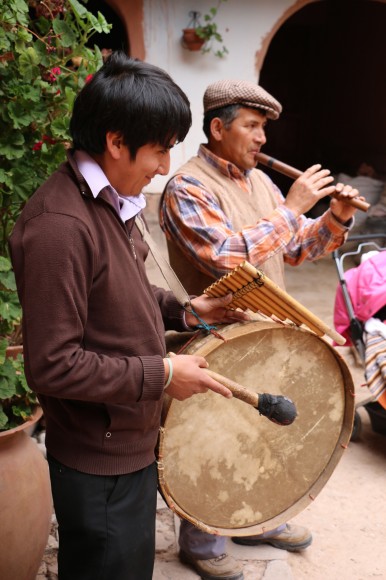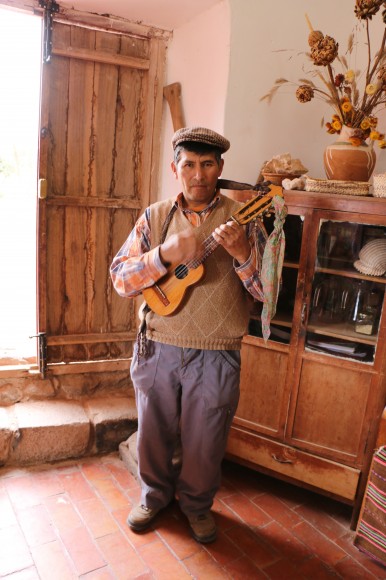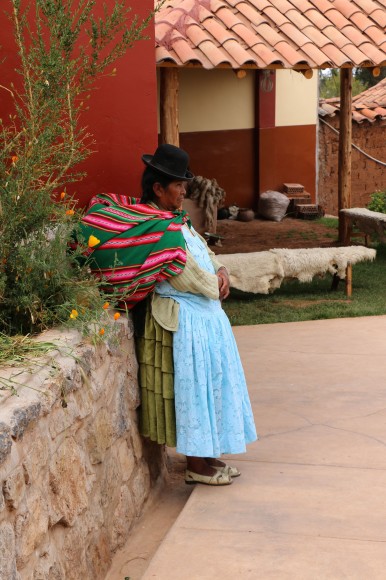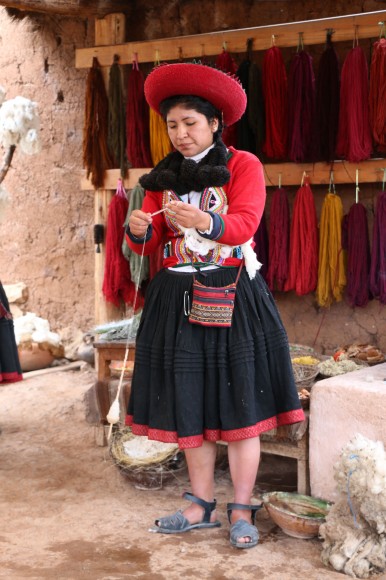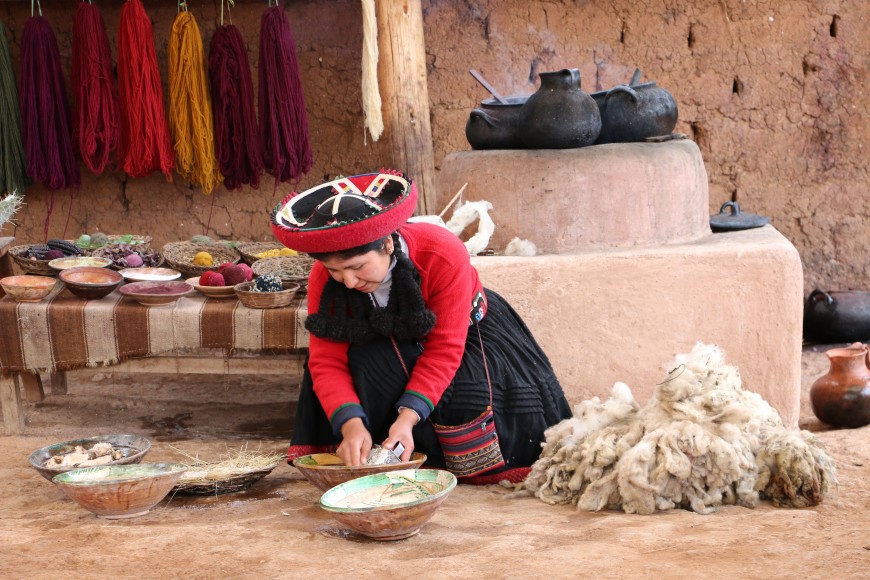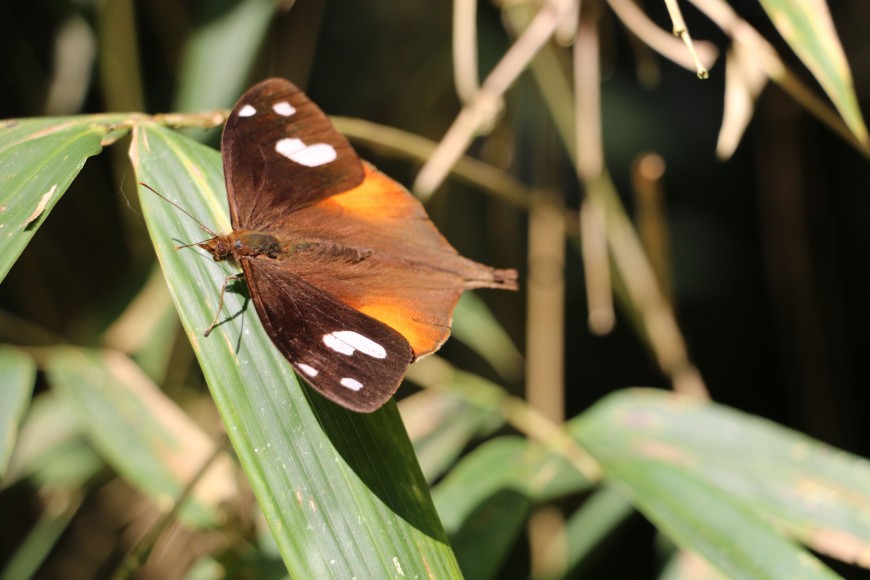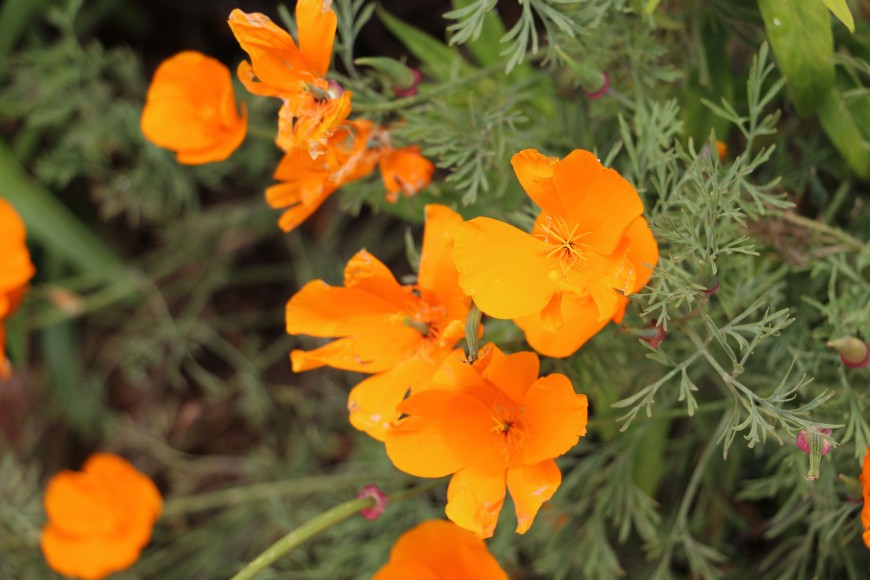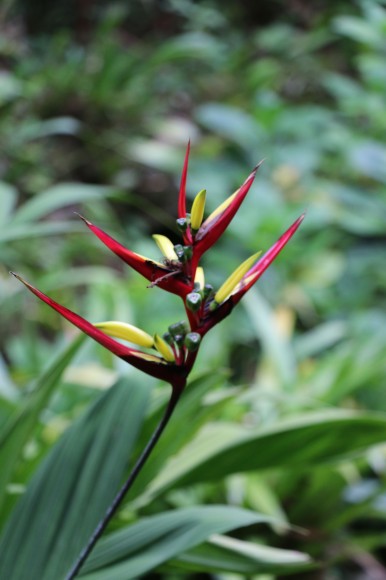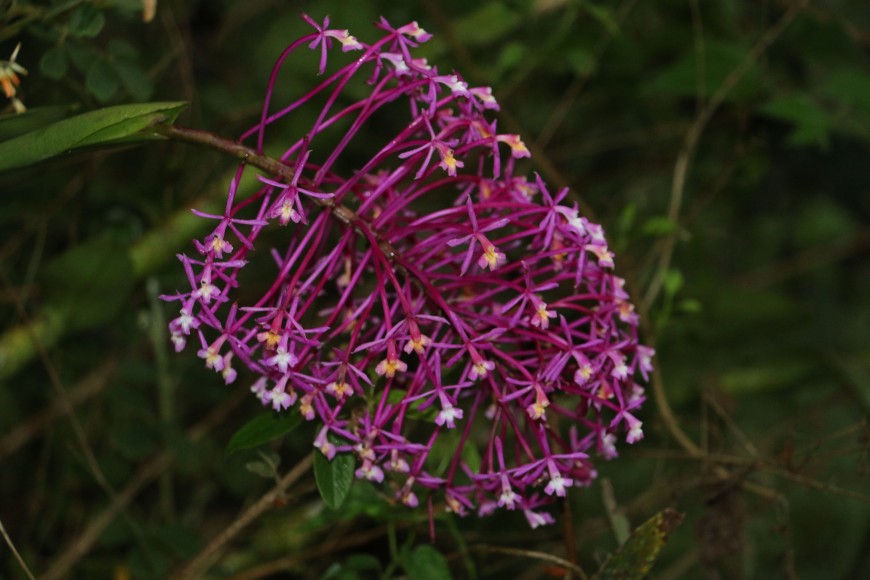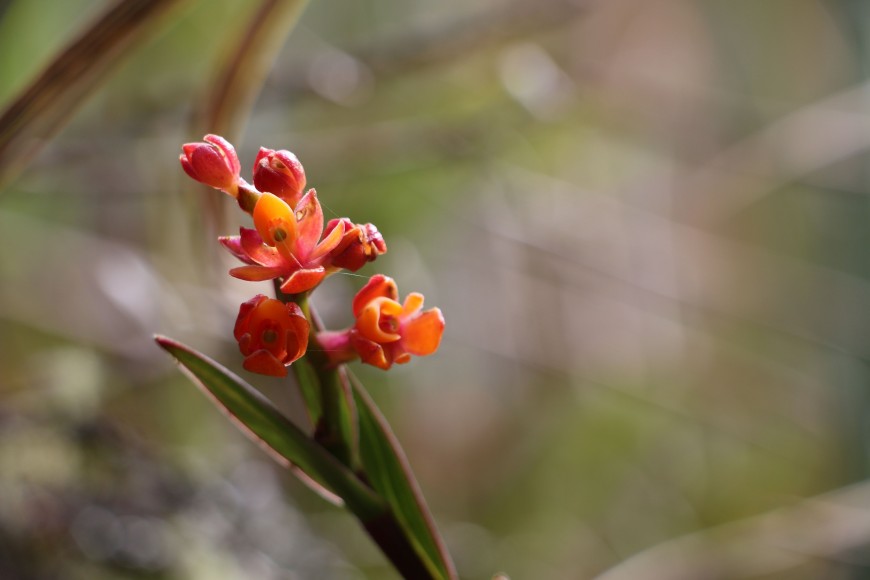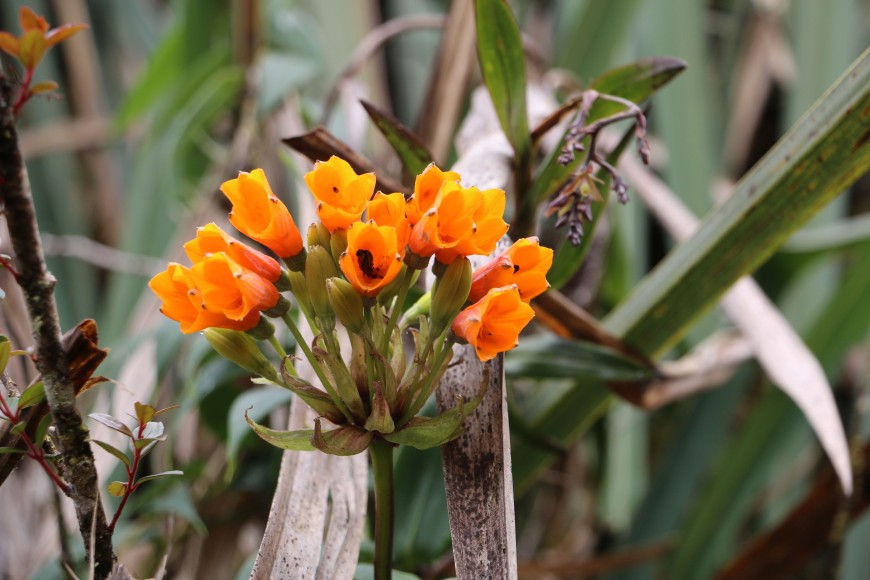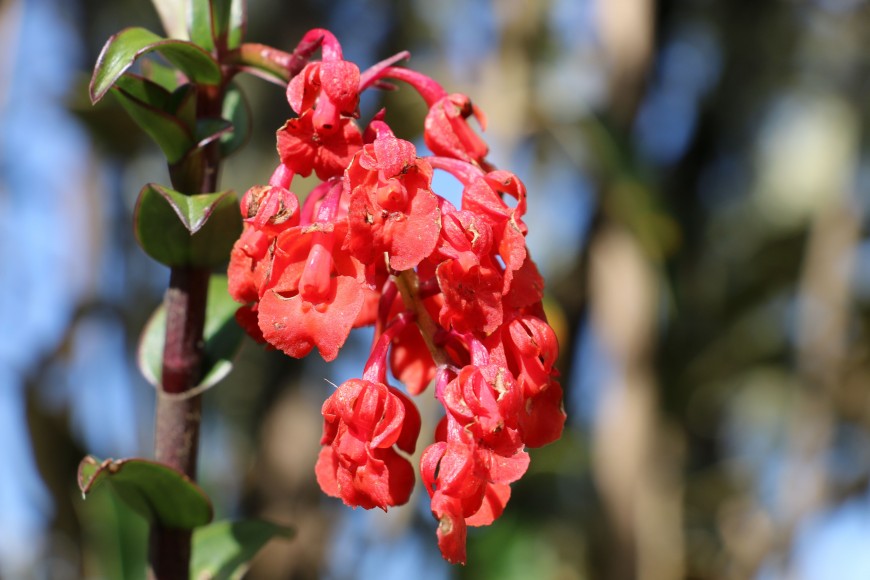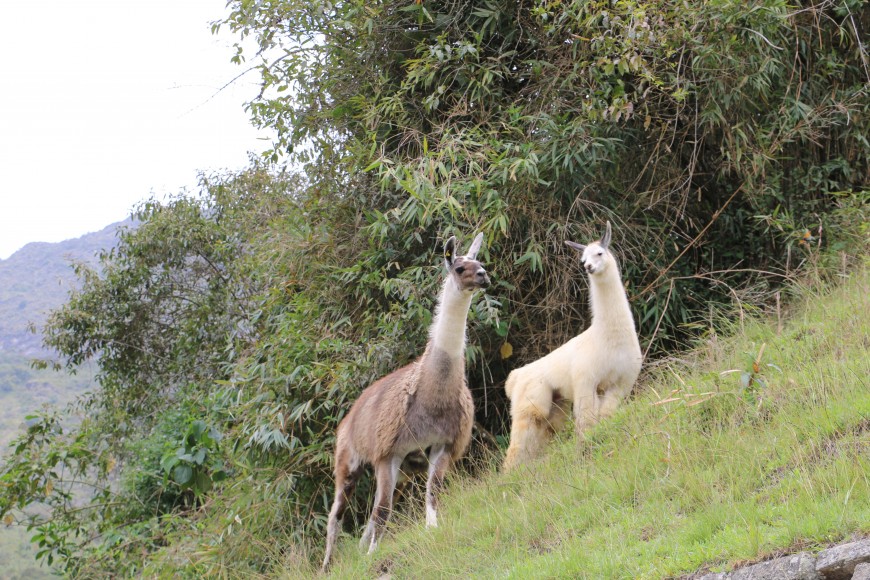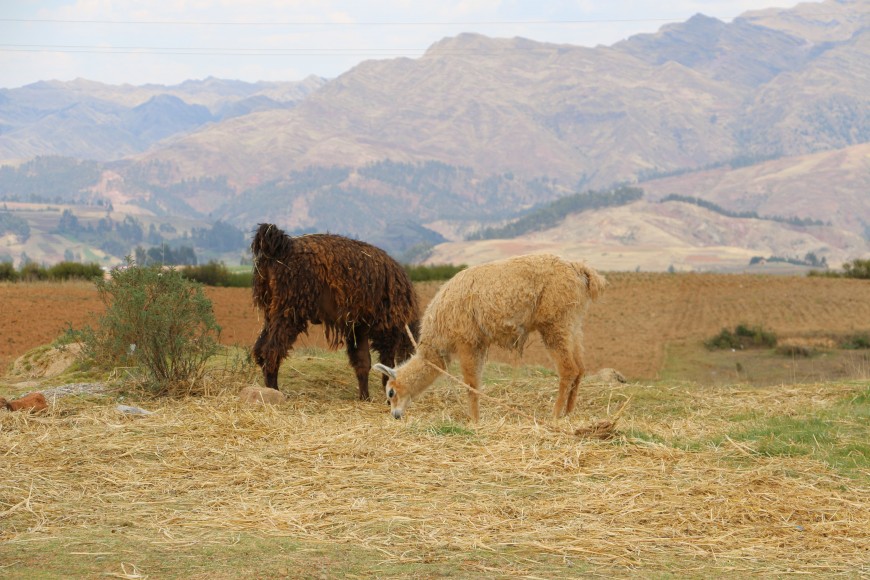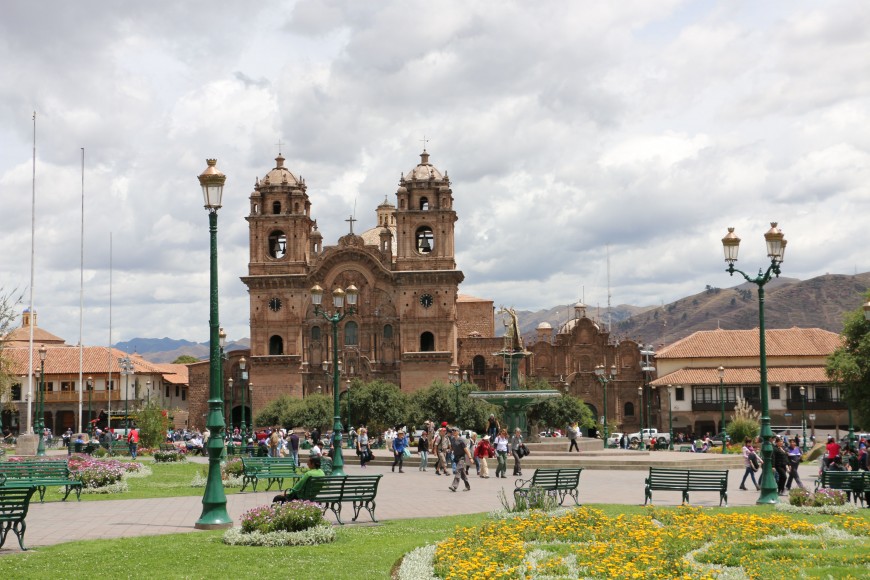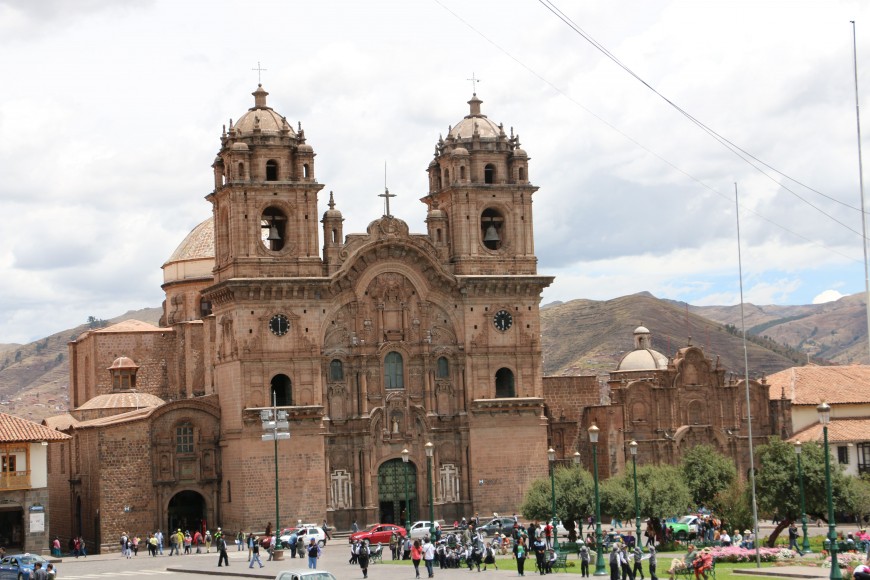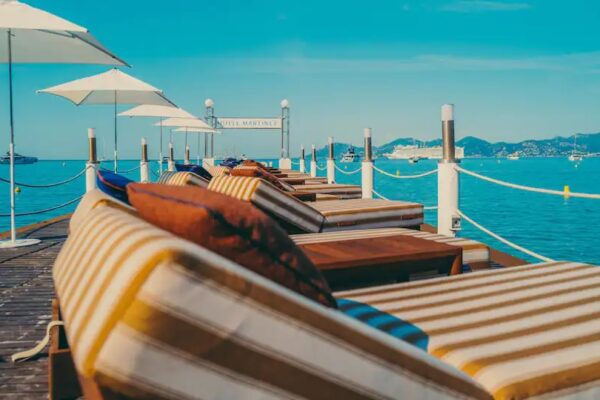My love affair with Machu Picchu started when I was in my mid twenties whilst working with an American airline to promote the richness, diversity and beauty that Central and South America has to offer.
Hours of putting brochures and ads together to promote this part of the world meant that the iconic image of Machu Picchu was imprinted on my soul early in my adult life.
Even before “bucket lists” were de-rigueur I knew Machu Picchu was on my list.
My desire grew in my 40’s when, having just had my son, my amazing 74 year-old Dad announced that he was going to walk The Inca Trail. Something he had always wanted to do. Some families may have wanted to talk him out of it at 74, but given the same man took up tennis at 60, skiing at 65 and paraglided at 70, we knew he would do the trek regardless of what we said.
My Dad believed in the power of “want to” that is, if you really want to do something, nothing will stop you.
So feeling incredibly proud of him, I wished him well on a journey that I would have dearly loved to have done with him.
My Dad passed away in 2013 at 82 having lived a healthy and full life following his heart and his dreams – the loss is still immense.
One of my most treasured things I have is his diary of The Inca Trail trek, a detailed account of his gruelling physical and emotional journey through the testing 4 days to Intipunku , The Sun Gate, the entry point to the mystical city in the clouds.
So, last October I finally set out on my own personal journey to follow in his footsteps and walk The Inca Trail, to give myself the gift of time and a connection with a place that I know he adored and also put a massive tick against one of my earliest bucket list destinations.
Like any pilgrimage part of the journey is in the planning and preparation. Researching the best times to travel, companies to travel with, equipment needed etc. But finally once the precious Inca Trail pass was purchased (in 2002 Unesco restricted the number of passes released to ensure the preservation of this World Heritage Site) there were just a few more months of training as well as raising money for my Dad’s favourite charities.
Finally the day came and I set off with many mixed emotions:
Excitement, at the prospect of walking in my father’s footsteps and finally seeing the mystical Machu Picchu.
Fear, of the dreaded and rather random altitude sickness.
Anxious, at leaving my husband and son for the longest period since our son was born.
I am definitely not an adventurous spirit by nature more of a luxury junkie, so this whole experience was definitely taking me out of all of my comfort zones.
My anxiety was further fuelled at check-in when the stewardess stated “ didn’t some famous DJ walk The Inca Trail and die!” so with this ringing in my ears and my son’s last words to me echoing in my head “ Mummy please don’t fall off the mountain” I embarked on the next stage of the journey.
There is no direct route to Lima so it’s a rather arduous journey over a European stop. My route took me from London-Paris, then Paris-Lima, and after a glimpse of Lima at night on the drive to the wonderful Miraflores hotel there was just enough time to grab a light snack before a wonderful short sleep in fresh white linen sheets, before being up again with the sparrows for the final flight to Cusco – the city nestled at the base of the Andes where we could prepare for the trek.
Landing in Cusco you do feel like you have left the 21st Century and all its demands, technology and hustle behind you and stepped back into a place that time has forgotten.
The cultural shift is striking. The buildings are eclectic, ranging from stunning opulent cathedrals and churches built by the Spanish Conquistador, who arrived in 1532 and squashed the entire Inca Empire, sitting alongside the simple Inca structures that mingle quietly but confidently with the lavish. The lack of people and pace is also quite extra ordinary. Cusco was the heart of the Inca Empire and is still feels like a living breathing influence even today. The city sits wrapped in the stunning Andes mountains that erupt behind the manmade statements of very different cultures.
Jacada Travel, had advised me to leave Cusco, which sits at 11,200 feet above sea level, and head straight to The Sacred Valley to Ollantaytambo to take it easy for a few days as the valley sits a little lower at 9,000 feet making altitude acclimatisation gentler.
The drive was spectacular and overwhelming, it’s raw and beautiful landscape a feast for all the senses. We encountered our first Inca descendants or Quechuans, Inca was the name given to the kings of this ancient civilisation, the population that lived here around 1428 to 1533, were known as the Quechuans.
After a short journey we checked into the stunning Belmond Rio Sagrado Hotel in the heart of The Scared Valley. As we arrived there was a powerfully reminded of how serious altitude sickness can be , as a guest was being seen by a doctor after spending a few days in hospital on a drip. Altitude sickness is the main risk that trekkers face and it is totally random as to who and how it affects you.
One of the biggest mistakes trekkers apparently make is that after an arduous journey to get to Cusco travellers set out to explore all that it has to offer – wonderful sights, sounds, historic, architectural riches as well as great food, having not allowed their bodies to adjust.
Perhaps like many things in life if we race to the destination we sometimes miss some of the delights of a slower paced journey.
I was fortunate to spend a few days at the hotel that sits next to the Urubamba River that cuts through The Sacred Valley of the Incas. Named by the Incas they felt the entire area was sacred due to its lush, natural beauty and vitality. We were mesmerised by the scale of the mountains and the view from the bedroom and its glass walled bathroom was totally captivating. Alpacas were grazing on the lush riverbank and humming birds darted from flower to flower in this natural haven.
However, even at this lower altitude the altitude sickness started. A crushing headache, no appetite, nausea and an eerie feeling of being disconnected from everything including your own body crept over me. Copious amounts of water and the mystical coca tea, which is brewed from the leaves of the coca plant, seemed to help as did the “Altitude adjustment massage” at the hotel spa. The massage is geared specifically to release the building tension caused by the lack of oxygen that the body is experiencing due to the altitude shift.
Laying on the massage table with my head pounding hideously and doubtful thoughts creeping in about whether I could actually do this trek I was given a very powerful ‘sign’ . From the soft background music of Peruvian pan-pipes one of my Dad’s and my favourite music tracks started to play and I instantly knew that I was where I was meant to be and all was going to be well.
With one more day in The Sacred Valley to further acclimatise we were treated to a magical introduction to this inspiring Inca culture by 2 incredible guides Diego and Cesare.
Our first stop a traditional weaving site where the Andean women showed us their ancient art. How they use the wool of the hardy Lamas and Alpacas, colour it using natural plant dyes, then use it to weave beautiful traditional cloth for clothes, blankets, table linen etc. Each skill handed down from mother to daughter generation to generation.
Then onto a church, constructed on an ancient Inca religious site, with breath taking views of The Scared Valley. A site , that clearly highlights the early struggle between the Inca’s faith and the imposed Spanish Catholic faith.
In time the Spanish realised the importance of harnessing the support of the Inca’s through their faith and harmonised both religions. The religious art from this period demonstrates this fusion of faiths with Christ being shown with darker Quechuan coloured skin and in one famous painting of the last supper the Incas favourite dish of guinea pig is part of the feast!
From here, we travelled on to the stunning Moray – a unique concentric circular agricultural experimentation ground that was designed to use the gradient of the valley and a natural earth bowl to carve out circular terraces, at different heights over 30m, where the temperature varies as much as 15 degrees Celsius (27F) from top to bottom!
The top was cooled by the glacial wind from the mountains and the base warmed by the earth and sun. Each level, allowing different crops to be grown according to their preferred temperatures. If that isn’t astounding enough, the terraces themselves were hand crafted out of thousands of stones that kept the crops cool in the heat of the temperatures but also protected them from frosts at night as the stones absorbed heat from the day and acted like a warmth barrier. Such sophisticated farming techniques from the 13th century is both astonishing and humbling.
Its believed that it was this agricultural engineering that gave the Inca’s there amazing reputation and arguably their power in the region, as they were able to offer food and protection to weaker tribes and so their numbers swelled. This experimental farming gave rise to over 3000 types of potatoes and 150 types of corn each engineered to withstand and thrive in different conditions across the Inca’s increasingly varied empire.
My respect for this empire grew by the moment for their ability to work in harmony with such a powerful landscape.
We then visited Maras the site of pre Inca salt evaporation ponds that are fed from a single source that is emitted from a subterranean stream with a water that is so mineral rich it delivers some of the richest salts in the world. These spectacular fields with their complex irrigation system are lovingly tended today by the ancestors of the original Inca culture, farmed the same way as they have been farmed by generation upon generations inherited father to son.
Then onto Wayra for a Peruvian lunch that included a selection of the famous potatoes and corn cooked in traditional ways whilst we watched a display of the Peruvian Paso horse – an indigenous Andean horse that was cherished by Peruvians and Spanish alike for their stamina and comfortable gait.
The final treat of the day was a musical interlude with a Peruvian family who invited us into their home and shared with us the unique musical instruments, dances and clothes that are such a powerful part of this inspiring culture.
So much of the rich Inca culture seems alive today and is still engrained and entwined in the total respect and reverence for nature. The Inca’s worshipped many gods but the most significant was Pachamama or Mother Earth.
The descendants of the original Quechan people even today use the famous Coca leaves as part of their offering to Pachamama – usually mixed with something gold coloured and something silver coloured. The offerings are then burnt and the wishes carried on the wind.
Gold represents the tears of the sun and silver the tears of the moon. Interestingly during the Inca Empire whilst rich in both gold and silver they never used these riches to trade as they were considered ‘of the gods’. Something unfortunately that made them very attractive to the Spanish who loved precious metals.
A powerful part of the Inca belief system was and is based on what they call “Ayni” or reciprocity – ie to receive from the gods one must first give. Hence even today although over 80% of the population of Peru are Catholics many still carry out ancient Inca offerings to give something to the gods before they ask for anything.
By the end of the day we had glimpsed into the world of an amazing people and culture, a civilisation that appeared to grow in power and stature not due to force or aggression but by harnessing their intellect and respecting and working with nature to ensure they thrived as a race and became healthy, powerful and strong.
Next morning at 5.30am Carlos, the lead guide for Enigma the specialist trekking company, picked us up and introduced us to our 11 fellow trekking travel buddies. An international mix of English, Australian, American and Japanese with ages ranging from late twenties to early 60’s but all with the same sense of nervous excitement. Our 22 porters most of whom are small powerhouses of about 5ft 3” load the heavy 55kg back packs (my entire bodyweight) onto their backs that will form our lifeline for the next 4 days – our food and entire mobile campsite.
After breakfast and a briefing, our Inca Trail passes were stamped at the entry point and we started off on the 42 km (26 miles) trek a marathon in more ways than you can imagine at this point.
My heart was racing from either the excitement or the altitude but I set off like a hare on a race only to find that after about an hour of steep climb that the lack of oxygen is a great way to slow your pace. This 3-night camping and 4 day adventure had begun. We all settle into a gentler pace and started to discover more about the Incas from Carlos, more about each other, and more of what we can expect of ourselves on the trek.
The first thing I learnt is that the day we start our trek is called the Day of the Living – an ancient Inca day to celebrate life, whereas tomorrow is All Saints Day or the Day of the Dead, a very auspicious day in the Inca calendar where they celebrate those that have passed on – how very fitting!. Carlos offered to help make an offering at the highest point of the trek, an offering to Pachamama to thank her for my Dad and all that we shared and all the gifts that he passed on to me.
The next thing I learnt is that altitude sickness is swift and random – my travel companion who had been doing really well suddenly started to really struggle to walk and get her breath. The lack of oxygen was causing a crippling headache and cramping in her stomach. At lunch the guides assessed her and gave her the option to return to the start point or take a mule for the next part of the journey to conserve her energy.
She refused both, dug deep and soldiered on after a few grains of boiled rice washed down with lashings of coca tea. The afternoon trek was particularly challenging and demanding and what should have taken a few hours took us over 5 hours. We had allowed the main group to walk on and ended up with our own personal guide Raul who was incredibly supportive and patient as every step that my companion took she had to stop and gasping for more breath.
Finally after 10 hours walking just 16 km we fell into our little tents and awaited for the temperature drop to below freezing… but with multiple layers and my Dad’s sleeping bag wrapped around me I drifted off for a few hours sleep .
The next day we were woken at 5 am by the porters, with more Coca tea and hot water to set us up for the toughest climb. Having not seen the views the night before I stepped out of the tent to the most awesome sight.
Our campsite looked out across the most stunning valley. The sunrise was breath taking. The mood in the team was tenacious, as we all knew that day 2 is the most challenging – the weather was volatile and the terrain unforgiving. But we were all committed and determined to reach the highest point at 4,200m (nearly 14,000 feet) at the end of Dead Woman’s Pass.
I remember my Dad talking about Dead Woman’s Pass and I was spurred on by the fact that at the tender age of 74 my Dad’s ‘want to’ got him to the top!
The climb is incredibly steep and the steps are giant-like. How did the Inca’s build this trail and manoeuvre such massive rocks to create these steps using manpower and animal strength alone? It is unfathomable. The rain made the trekking even more challenging. No one chatted that day as we all focussed on each step and dug deep to find our very own flavour of ‘want to’ battling the inner voice and your body screaming out to stop as the oxygen reduced further.
My own particular strength came from 2 songs that buzzed continually around in my head; The Lighthouse Family – Question of Faith and Postcards from Heaven. I was was further supported by the knowledge that Carlos had shared that the Inca’s believed that when a soul passes onto the Upper World they can revisit this world as a humming bird or a butterfly and , as if on que, whenever I felt my own ‘ want to ‘ wane I was visited by these precious signs that drove me on.
The elation as I reached the highest point was overwhelming. The view matched it.
You only live once (YOLO) and it will be a moment that I will remember for the rest of my life. I was totally in the moment, so grateful for this massive connection with such raw powerful natural beauty and the power of the human spirit to strive to achieve its hearts desires. My Dad was with me at that moment I know.
Having caught my breath, at a slightly higher point discretely guided by Carlos away from the group we create an offering to Pachamama to thank her for my Dad. I am more spiritual than religious and to me this simple Quechuan act of thanks was very incredibly powerful.
The next part of the trek is a decent which is equally punishing to the body in other ways – whilst the slightly lower altitudes starts to allow the oxygen to flow more easily your skeleton and joints are put to task. Another hard days trekking and others in the group started to suffer. But there was never any doubt that the journey will continue.
Each night over dinner Carlos shared some more insight into the Inca people and what they believed and how they lived their lives.
About the Chakana or Inca Cross the symbol of the Incas and a representation of the Tree Of Life. It’s 12 different steps representing key foundations to their belief:
-
The core elements of Sun, Water, Earth
-
The 3 laws or regulations Love, Learn, Teach;
-
The 3 levels of the Inca world – the under world, this world and the upper world
-
The 3 animal symbols of each world, the snake (under world) puma (this world) and the condor (upper world).
The Incas’ believed that Qosqo (Cusco) was the centre of all worlds, the heart connecting everything. Permeating from it were many significant spiritual sites across the region that the Quechua people were encouraged annually to pilgrimage to for physically and spiritually cleansing. Machu Picchu was just one of these sites but archaeologists believe that there maybe 100s more to be discovered.
Machu Picchu was considered to be of such spiritual relevance as it was so close to the clouds and the Upper World.
The third day started at 6am with the most beautiful sunrise and is defined by a more relaxed energy in the group as we all knew that we have walked the toughest part of the journey but joints are hurting, blisters are bleeding and altitude sickness is still a blight for some and with little or no food for some strength was also waning.
The terrain was still tough and ever changing. Raul, our personal guide explained that there are 3 levels of terrain on the trek – Andean Mountain, Cloud Forest and Rainforest and we are approaching the Rainforest – every level has its unique personality but we had more time to absorb the beauty here – Andean orchids in every shape and colour, incredible trees and mosses and of course, stunning butterflies that seem to be particularly attracted to me and often settle on me for a brief moment that disappear as fast as they arrive.
Having let the main group move at its own pace I walked a lot on my own this day. The peaceful rhythm of walking and listening to your own breath and the absorbing beauty of this part of the trek was hypnotic and I found myself at one stage on the most beautiful precipice all alone looking out into what is probably one of the most beautiful sights I have ever seen – and whilst I stood there a huge wave of emotion rushed through my body as I really connected to the fact that I was standing in the same spot that my Dad would have stood looking out at the same view and in that moment something shifted for me. Two butterflies landed on my arm and sat for what felt like eternity. I lost my Mum 6 months before my Dad but yet it felt like there was a connection here in this place in that moment that I cannot begin to explain.
The 3rd day half day trek is a combination of 1.5 hours hard trekking up treacherously narrow steps then 2.5 hours decent on paths that are so steep and slippery that I am again struck by the pure strength both emotional and physical that my 74 year old Dad had to do this trek. I am both in awe and so proud of him. Along the path we start to see evidence of Inca terrace farming and when considering how far we have walked, and in what conditions, I am also in awe of a people that lived here over 500 years ago and farmed this country and walked this path in a pilgrimage themselves.
One of the trekkers was struggling badly with altitude sickness so I shared with her my Dads mantra and his ‘ want to ‘ and how he would often morph it into more of an army march i.e. one two one two… want to want to…and she smiled and committed to her want to.
Once we arrived at the third and final camp we are all exhausted but elated to have arrived in one piece. We had the most amazing lunch and then all take a few hours to relax and reflect on what we have achieved so far. Over our last dinner Carlos shares some more of the history of the Quechua Incas who lived around 1438 to 1533. In 1532 the Spaniards came across the empire and realised how rich they were both in lands and in gold and silver.
Having battled over Cusco and other major cities the Spaniards felt they held the strongholds but Machu Picchu, as one of the sacred sites was never disclosed to the Spaniards and the people living there simple left and dispersed and the site was abandoned to natures natural cloak to hide it. It was only discovered some 400 years later in 1911, when a farmer happened to mentioned to an American archaeologist (Hiram Bingham) about the city in the clouds.
With the stories whirling around in my head and knowing that our 4th and final day was to start at 3.30am, my last night was spent tossing and turning reflecting onthe trek itself, the raw natural beauty along the Inca Trail and being so grateful for the people that have brought me here to this point and of course my Dad. My thoughts of all the different landscapes we have seen so far on this journey and how each one shapes into the next and the parallel of how our own life events shape our internal landscapes too. This really had an extraordinary pilgrimage to get to this point and I was so excited by the final part.
Finally the last day arrived. In pitch dark we packed away the campsite and started off to Intipunku, The Sun Gate, the entry point to Machu Picchu. The structure was built as a natural symbolic gateway above the city to announce to the pilgrims that they had arrived at this spiritual place. The hope for all trekkers is to arrive at The Sun Gate as the sun comes up and that Machu Picchu reveals itself through the top of the wispy clouds. This last part of the trek is hideously testing yet I think pure adrenalin was coursing through my veins at this point.
When I finally reach The Sun Gate wearing a t-shirt that my dad had also worn on his arrival there, the feeling was of complete and utter exhilaration and pride – proud to have done it, supported by so many amazing people but even more proud of my Dad who did it 10 years before at the amazing age of 74.
This place is totally inspiring but so is the ‘want to’ of the human spirit driven to achieve extraordinary feats. And that’s what this place is – an entire city built with passion, determination and a commitment to create something out of this world – and that’s what it feels like when you arrive.
The trekking fraternity who have all been walking the trail all sit waiting in an eerie quietness waiting and hoping for the clouds to part to reveal their hidden treasure. There were moments where something not quite distinguishable or visible peeps through the clouds teasing us all and then evaporates like a vision. So after a long wait we agree to start the final decent down to the heart of the city – a walk that will take another 1.5 hours.
And like many things in life it’s when you least expect it that it happens and as if wanting to completely take us off our guard as we rested after about an hour the clouds parted and we are exposed to the entire glory that is Machu Picchu. No picture will ever be able to capture the feeling when you see it – there is a magical euphoria.
And as quickly as it revealed itself it disappeared like some apparition.
Exhausted by the early mornings arduous trekking and lack of sleep the pilgrimage is over for me. Whilst I soak up some of the knowledge that Carlos shares as we graze on the history of the stunning man-made citadel built above the clouds – it’s almost like my senses cannot take any more in.
I have often seen the quotes “happiness is not a destination, it’s a way of travelling” or “travel is as much about the journey as it is the destination” and on that day it could not have been more true. The richness was the entire journey to get to this place – a pilgrimage that felt like it had started in my twenties and ended in my 50’s. I was at peace with a life long desire that had driven me to see a place that I would loved to have shared with my Dad in his living years yet feel I have still shared it with him in a deeper spiritual way.
After a few hours at Machu Picchu we took the bus down to Aqua Calientes and shared a final group lunch – including for some guinea pig! I was happy with an omelette and a cool glass of white wine. But then all I wanted was a hot shower and a bed of white crisp linen. Some sad farewells and the trek was over.
This journey proved that I do have an adventuring spirit but for now this pilgrimage was over and my luxury junkie was back – so we checked into the Inkaterra Hotel a stunning resort situated in its own lush rainforest with orchids, birds and its own Peruvian bear conservation project.
We ordered room service and jumped into a divine shower. In my Dads diary I remember his comment after his first shower and his cherished single malt whiskey, and it was “ God is in his heaven” and I know exactly what he meant.
After a sleep fit for an Inca King we packed up and caught the train destined for Cusco. As the train pulled out I fought back a few tears. There is something quite magical in this place – for me it was a connection with myself, my Dad, but also with a pure energy source and nature that I have not experienced anywhere else in my life..
For most of the train journey my travel companion and I were silent as we absorb and integrate some of what we have experienced and felt in this incredible place. The Inca’s may have lived 100’s of years ago but in the simplicity, connectivity and harmony they lived a life that was so much richer than ours in so many ways.
I thank the Inca’s, Quechua people and Machu Picchu for showing me so much. For the importance of Ayni or reciprocity, the importance of giving thanks before we ask for more; the 3 powerful regulations to lead your life by Love, Learn and Teach and I thank my Dad for showing me that with enough ‘want to’ you can achieve all that you want in your life.

